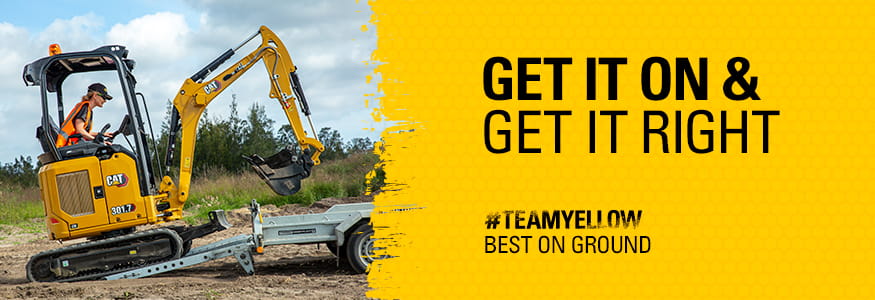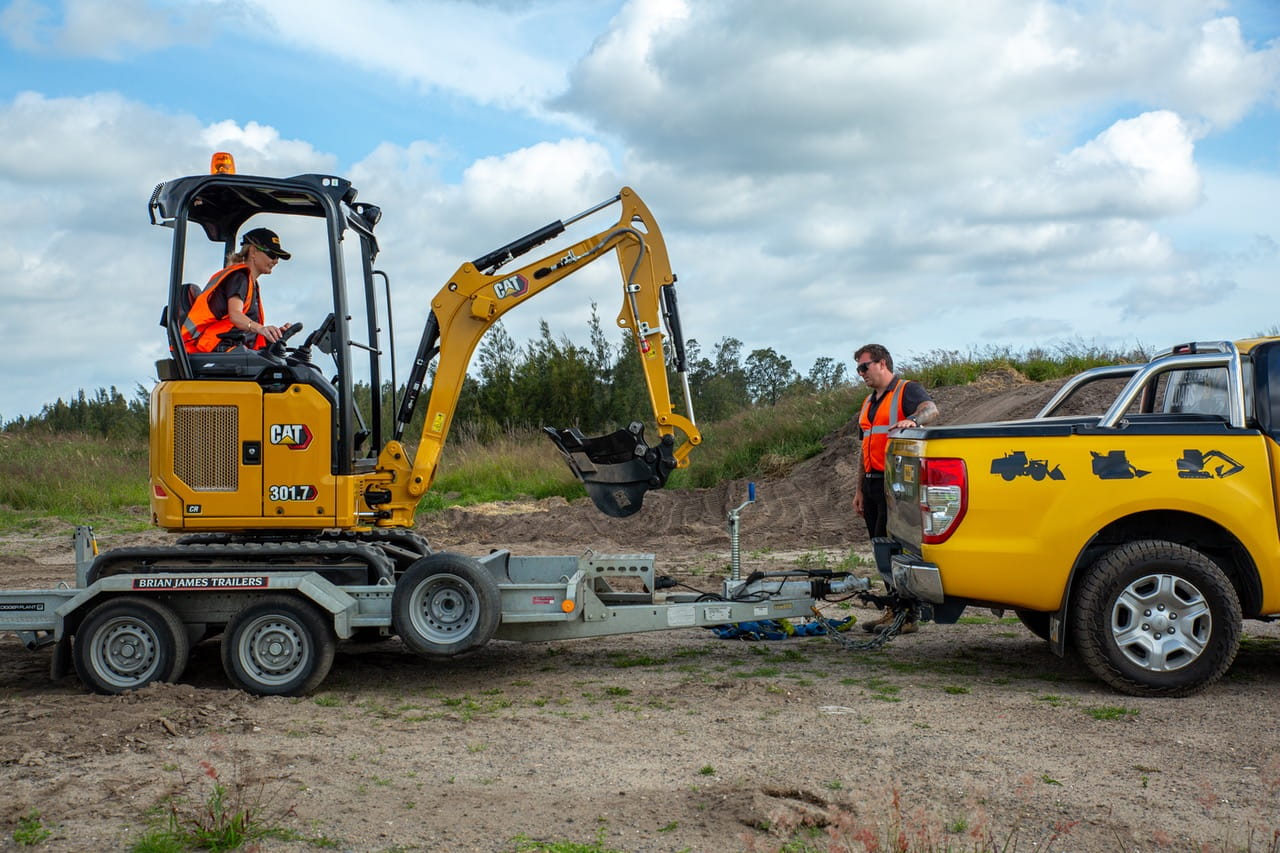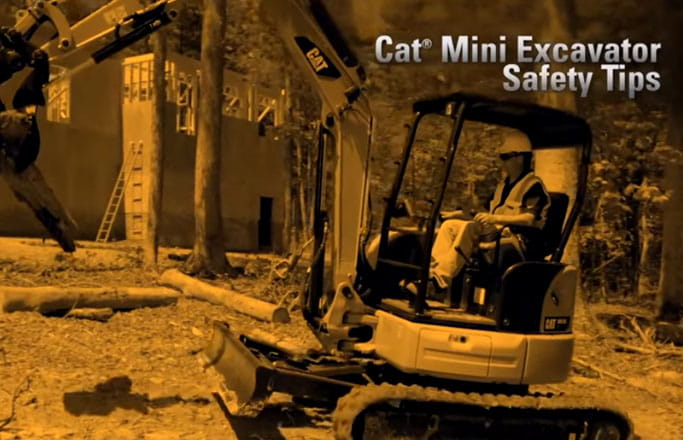Mini Excavator Safe Load and Secure


Knowing how to correctly load and secure your mini excavator is not just a useful skill, but a legal obligation under various state and national chain of responsibility legislation.
Essentially, the legislation places the duty of care for safe and compliant transportation of equipment on everyone involved in the supply chain and penalties can be severe for breaches such as overloading, non-compliant restraint and a host of other offences.
That means as the owner or operator of a Cat Mini Excavator, you are legally obliged to know how to load, unload and secure your equipment on a trailer. And legalities aside, you no doubt want to protect your machine and your safety as best you can.
See the tips below to get it right and check out the video for a quick demonstration on loading and securing Mini Excavators under 2 tonne:

Before you even commence the loading process, take time to familiarise yourself with key specifications of your equipment.
This includes:
Next, ensure you are all set to load and unload safely by following these steps:
WARNING: Ensure the trailer is correctly hitched to the tow vehicle prior to loading or unloading - failure to do so may result in uncontrolled movement and/or roll over. Use a jockey wheel to place tow ball scale under the hitch of the laden trailer
As always, check your Operation and Maintenance Manual and refer to any local regulations to ensure you're working safely and that you're in good shape to do it all again tomorrow.

Oldfields Cat 299D3 XE & Mulcher named Best on Ground in hazard reduction

Safety is key when working with a mini excavator. This video gives you some quick safety tips and features for Cat Mini Excavators